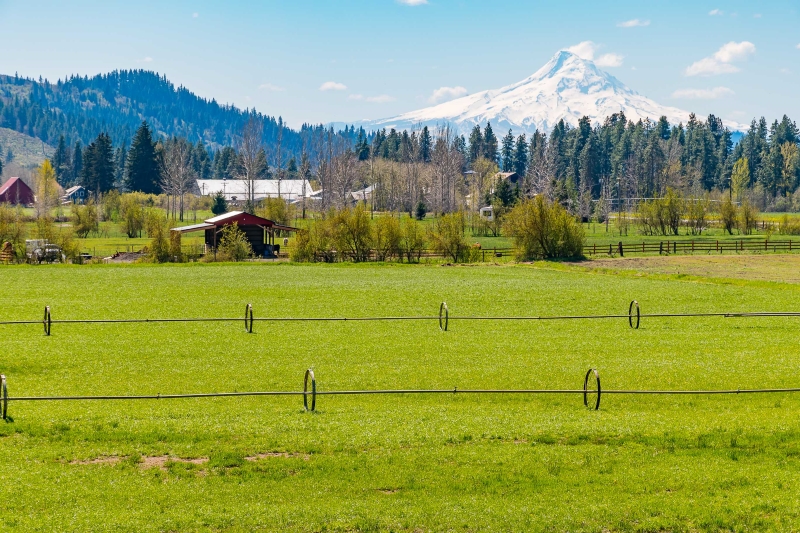Report on Water and Wastewater Rate Adjustments in the Eagle River Water & Sanitation District
Executive Summary
The Eagle River Water & Sanitation District (ERWSD) has approved a 2026 budget and associated water rate increases to fund critical infrastructure projects and cover rising operational costs. These initiatives are primarily driven by regulatory mandates aimed at protecting local water ecosystems, directly aligning with the United Nations Sustainable Development Goals (SDGs), particularly SDG 6 (Clean Water and Sanitation) and SDG 14 (Life Below Water). A key component of the financial strategy involves a public ballot measure to determine the funding mechanism for a $93 million wastewater treatment facility upgrade, presenting a significant decision point for community investment in sustainable infrastructure, in line with SDG 11 (Sustainable Cities and Communities) and SDG 17 (Partnerships for the Goals).
Infrastructure Upgrades for Environmental Compliance and SDG Achievement
Regulatory Mandate: Colorado Regulation 85
In 2012, the Colorado Department of Public Health and Environment enacted Regulation 85, which imposes stricter limits on nitrogen and phosphorus discharge into state waterways. This regulation is a direct local implementation of principles outlined in the SDGs.
- SDG 6: Clean Water and Sanitation: The regulation directly supports Target 6.3, which aims to improve water quality by reducing pollution, eliminating dumping, and minimizing the release of hazardous chemicals and materials.
- SDG 14 & 15: Life Below Water & Life on Land: By reducing nutrient pollution, the mandate helps protect and restore water-related ecosystems, contributing to Target 14.1 (prevent and reduce marine pollution) and Target 15.1 (ensure the conservation and sustainable use of freshwater ecosystems).
Capital Improvement Projects
To comply with Regulation 85, the ERWSD was required to undertake two major capital projects:
- Avon Wastewater Treatment Facility: A $57 million upgrade project, completed in September 2023, to meet the new nutrient standards.
- Regional Wastewater Treatment Facility (Edwards): A mandated $93 million renovation and expansion project required to be completed by 2029. This facility serves a large area from East Vail to Cordillera.
Financial Strategy and Community Partnership (SDG 11 & 17)
Ballot Measure 6A: A Decision on Sustainable Financing
The funding for the $93 million Edwards facility upgrade is contingent on the outcome of Ballot Measure 6A. This presents two distinct financial paths, demonstrating a partnership approach (SDG 17) to funding essential public infrastructure for a sustainable community (SDG 11).
- Option 1 (Ballot Measure Passes): A general obligation bond funded by a property tax is issued. The estimated annual tax is $112 for a property valued at $1 million.
- Option 2 (Ballot Measure Fails): The district will issue a revenue bond, which must be repaid directly through higher wastewater service rates.
Impact on Wastewater Rates
The outcome of the vote will have a significant and direct impact on monthly wastewater charges for all customers.
Individually Metered Residential Accounts (e.g., Single-Family Homes)
- If 6A Passes: Base charges increase by 4% to $67.69 per month.
- If 6A Fails: Base charges increase by 38% to $90.04 per month.
Commercial and Multi-Family Accounts
- If 6A Passes: Base charges increase by 5% to $84.01 per month.
- If 6A Fails: Base charges increase by 33% to $106.36 per month.
General Water Rate Increases and Budgetary Planning
Adjustments to Water Service Charges
Independent of the wastewater projects, the ERWSD and Upper Eagle Regional Water Authority boards have approved increases in water rates for 2026. This is to ensure the financial sustainability of water delivery services, a core component of SDG 6, by keeping pace with the rising costs of operations, maintenance, and materials.
- Individually Metered Residential: 11% increase in base charges.
- Multi-Family & Commercial: 12-14% increase in base charges.
- Mixed-Use: 18-19% increase in base charges.
2026 District Budget Overview
The approved 2026 budget reflects the district’s commitment to investing in resilient and modern infrastructure necessary for achieving its sustainability objectives.
- Total Appropriations: $97 million (an increase from $71 million in 2025).
- Key Allocations:
- $28 million for bond projects, including $20 million for the Edwards facility upgrade.
- $18 million for debt service.
- $38 million for operations (a 9.4% increase), including significant investments in information technology and covering higher insurance costs.
The final budget and rate structure will be certified in December, following the November 4 vote on Ballot Measure 6A.
Analysis of Sustainable Development Goals in the Article
1. Which SDGs are addressed or connected to the issues highlighted in the article?
-
SDG 6: Clean Water and Sanitation
This goal is central to the article, which focuses on the management of wastewater and the provision of clean water. The entire discussion revolves around upgrading wastewater treatment facilities to improve the quality of water discharged into rivers and the financial implications for sanitation services.
-
SDG 9: Industry, Innovation and Infrastructure
The article details significant infrastructure projects, specifically the multi-million dollar upgrades to the Avon and Edwards Wastewater Treatment Facilities. This relates to developing quality, reliable, and sustainable infrastructure to support community well-being.
-
SDG 11: Sustainable Cities and Communities
The issues of affordability of basic services (water and sanitation) for residents and participatory governance are key themes. The article highlights the community’s concern about rising costs (“pricing us right out of our homes”) and the use of a ballot measure to involve citizens in major financial decisions affecting the community.
-
SDG 14: Life Below Water
The primary driver for the infrastructure upgrades is an environmental regulation aimed at protecting aquatic ecosystems. The article explicitly states that the upgrades are necessary to comply with “Regulation 85, which tightened the restrictions on the amount of nitrogen and phosphorus that water providers… are allowed to release into Colorado’s waterways,” thereby addressing nutrient pollution.
2. What specific targets under those SDGs can be identified based on the article’s content?
-
Target 6.3: Improve water quality by reducing pollution
The article directly addresses this target. The upgrades to the wastewater treatment facilities are mandated by Regulation 85 to reduce pollution by limiting the amount of “nitrogen and phosphorus” released into the Eagle River. This is a direct effort to improve water quality by treating wastewater to a higher standard.
-
Target 6.b: Support and strengthen the participation of local communities in improving water and sanitation management
The article describes how the funding mechanism for the $93 million upgrade will be decided by voters through “Ballot Measure 6A.” This provides a clear example of strengthening the participation of the local community in a critical decision regarding the management and financing of their sanitation infrastructure.
-
Target 9.1: Develop quality, reliable, sustainable and resilient infrastructure
The article focuses on two large capital improvement projects: the completed “$57 million” upgrade of the Avon facility and the planned “$93 million” renovation of the Regional Wastewater Treatment Facility in Edwards. These projects represent a significant investment in developing sustainable and resilient water infrastructure to meet higher environmental standards.
-
Target 11.1: Ensure access for all to adequate, safe and affordable basic services
The article highlights the tension between providing essential sanitation services and ensuring their affordability. It details proposed rate increases for water and wastewater and quotes a resident expressing concern that “All of these things are pricing us right out of our homes,” directly engaging with the challenge of maintaining affordable access to basic services.
-
Target 14.1: Prevent and significantly reduce marine pollution of all kinds, in particular from land-based activities, including… nutrient pollution
This target is the fundamental reason for the actions described in the article. The entire project is a response to a state mandate to reduce nutrient pollution (nitrogen and phosphorus) from a land-based source (wastewater treatment facilities) into freshwater systems that eventually flow to larger water bodies.
3. Are there any indicators mentioned or implied in the article that can be used to measure progress towards the identified targets?
-
Indicator for Target 6.3:
The article implies an indicator related to the quality of treated wastewater. Progress can be measured by monitoring the concentration of nitrogen and phosphorus in the water released from the treatment facilities to ensure compliance with the stricter limits of Regulation 85.
-
Indicator for Target 9.1:
A clear indicator mentioned is the total financial investment in infrastructure upgrades. The article specifies the exact amounts: “$57 million” for the completed Avon project and “$93 million” for the planned Edwards project.
-
Indicator for Target 11.1:
The article provides data that can be used as indicators for affordability. These include the percentage increase in base charges for wastewater and water services (e.g., a 4% vs. 38% increase for wastewater) and the absolute monthly cost for an average residential account (e.g., “$67.69 per month” vs. “$90.04 per month”).
-
Indicator for Target 14.1:
The primary indicator is the reduction in nutrient load discharged into the river system. While not quantified as a percentage reduction, the goal of meeting the “tightened restrictions” on nitrogen and phosphorus serves as a direct measure of progress toward reducing land-based nutrient pollution.
4. Summary Table of SDGs, Targets, and Indicators
| SDGs | Targets | Indicators |
|---|---|---|
| SDG 6: Clean Water and Sanitation | 6.3: Improve water quality by reducing pollution. 6.b: Support and strengthen the participation of local communities. |
– Concentration of nitrogen and phosphorus in discharged wastewater. – Outcome of Ballot Measure 6A as a measure of community participation. |
| SDG 9: Industry, Innovation and Infrastructure | 9.1: Develop quality, reliable, sustainable and resilient infrastructure. | – Total financial investment in infrastructure projects ($57 million + $93 million). |
| SDG 11: Sustainable Cities and Communities | 11.1: Ensure access for all to adequate, safe and affordable basic services. | – Percentage increase in water and wastewater rates (e.g., 4% vs 38%). – Monthly cost of services for an average residential account. |
| SDG 14: Life Below Water | 14.1: Prevent and significantly reduce marine pollution… including nutrient pollution. | – Compliance with reduced limits for nitrogen and phosphorus release as mandated by Regulation 85. |
Source: vaildaily.com







